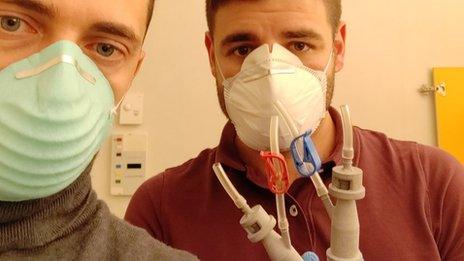Coronavirus: Can we 3D-print our way out of the PPE shortage?
- Published
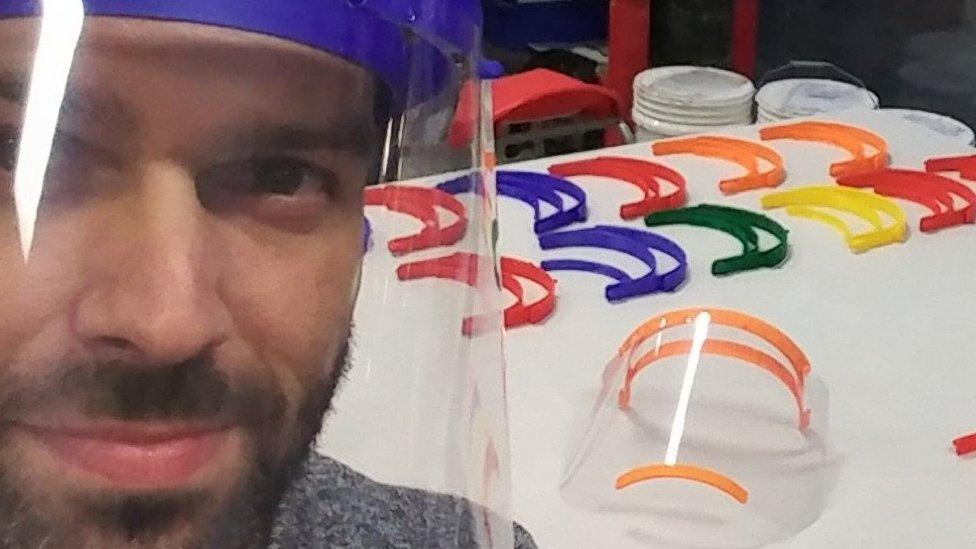
Dr Sam Pashneh-Tala's team has crowdfunded over £15,000 to make the face shields
Universities, tech firms and 3D print enthusiasts with their own printers are responding to the shortage of healthcare workers' personal protective equipment (PPE) - and in some case more complex hospital medical supplies - by making it themselves.
It's been called a "citizen supply chain".
In general, 3D-printed kit is fairly cheap to produce in terms of materials required, and can be turned around in a matter of hours on each printer.
There's a motivated community who want to make it and it can be distributed locally to those who need it without a centralised supplier - so is it the solution to the current PPE shortage?
Unfortunately, it's not quite that simple.
"3D printing is this technology where on the face of it people envisage this kind of Star Trek replicator, where you press a button and something gets made out of nothing," said Dr Sam Pashneh-Tala, a bioengineer at the University of Sheffield.
"This is not true - you have to understand the limitations."
And while it is undoubtedly in demand - there are a few issues to bear in mind.
There doesn't seem to be any official guidance for healthcare workers about the use of 3D-printed protective kit.
The BBC contacted several medical organisations, government departments and the NHS. They all replied, but none thought it was for them to say whether it was advisable for healthcare workers to use it.
The MHRA which oversees medical equipment, pointed to its guidelines on manufacture during the pandemic, external - but not all face masks, for example, are considered by it to be medical supplies.
Coronavirus: The volunteers making face shields for Madrid’s medical staff
There are various types of 3D printer and a range of materials they can print with. Both the printers and the materials vary in price, quality and suitability for different projects. Some materials, for example, will result in a more porous product, making it more difficult to clean.
While templates are being shared and modified among the 3D-printer community for creating PPE kit, not one of the resulting products has a CE Kitemark, the European safety standard, which ultimately means that there is no quality benchmark.
For this reason they cannot be sold - so no maker should be offering them in exchange for cash.
It is also impossible to guarantee how sterilised these products are because of where they are made and packaged, and as a result they are being given out with the guidance that they should only be used once.
Dr Pashneh-Tala is part of a team at the University of Sheffield called iForge that has so far made 600 face shields for healthcare workers using a combination of 3D-printed frames, visors made from laser cutting and elastic.
He says they have been sent to local GP practices, social workers and paramedics.
In terms of materials each shield costs less than £1.80 - but a laser cutter can cost thousands.
He says they are manufactured in a controlled environment.
"We put them through a cleaning process designed to deactivate Covid-19 specifically," he said.
"It's for the user to determine if that is suitable. Healthcare providers so far have been happy."
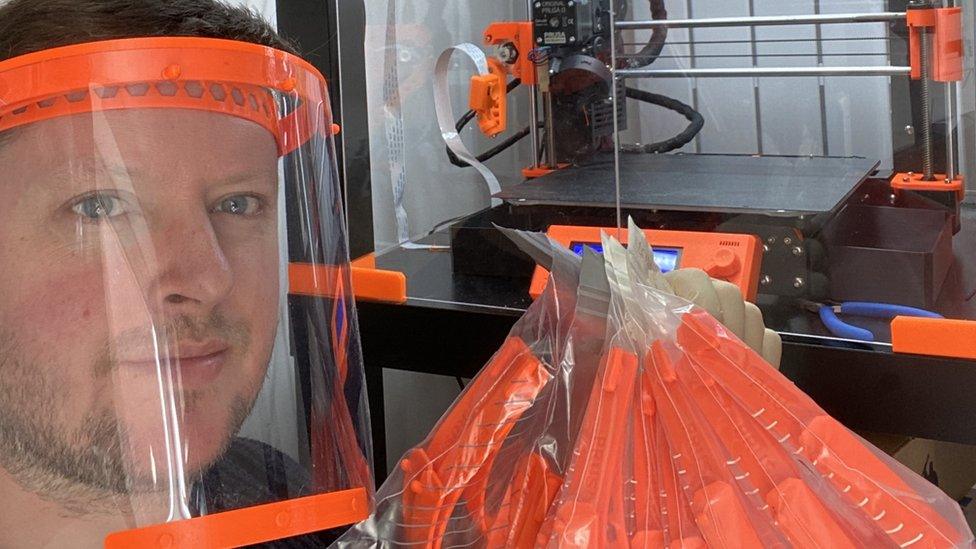
Gary Riches is 3D-printing face shields from his home
While professionals and experts are on the case there's also an army of enthusiasts using their own 3D printers at home.
Gary Riches, a software engineer from Hertfordshire, is part of a co-ordinated network of thousands of volunteer 3D printers called 3DCrowd UK.
So far, he has made 150 face shields on his two 3D printers at home, and says he has delivered 39 of them to community nurses and midwives locally.
3DCrowd UK is using a template that has been approved in the Czech Republic although not officially in the UK.
Mr Riches feels strongly that it's worth the risk.
"If we worry too much about whether it's 100% perfect then nobody who needs it will get it," he said.
"If you can step up, you have to step up."
And there's certainly the demand - 3DCrowd UK says it has received requests for nearly 350,000 face shields so far.
Some 3D printers have gone even further. Last month, an Italian firm called Isinnova hit the headlines when it announced it had 3D-printed ventilator tubes for a hospital in Brescia, a region badly hit by Covid-19.
The tubes can only be used for eight hours at a time and the regular supplier said it could not send replacements in good time.
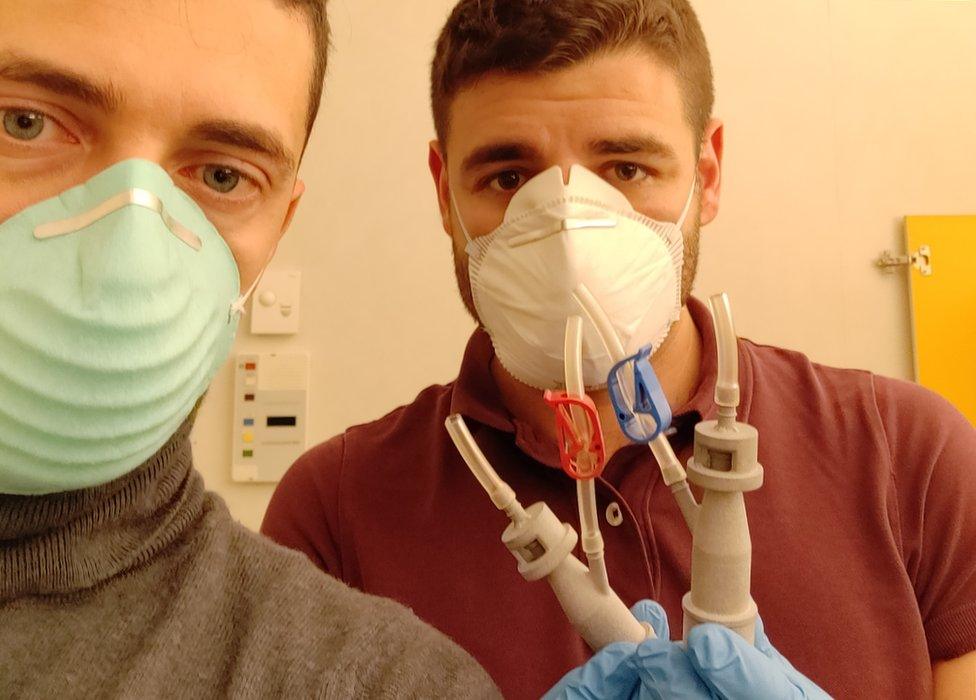
Isinnova's 3D-printed valves
However, IDC analyst Galina Spasova urged caution about their use.
"While such 3D-printed items have proven helpful in emergency situations, the safety of these designs is under examination," she wrote in a blog post, external.
"At this stage, there is little visibility on the outcomes of the use of these components. They remain uncertified medical devices and should be used with caution and as a last resort."
Dr Pashneh-Tala agrees.
"With a face shield, there's reasonably low risk - it doesn't have working parts beyond covering your face," he said.
"For a higher-end application - what kind of performance are you getting? Proper certification and testing is needed. There are people who are pushing for that."
3DCrowd UK is seeking more volunteers for its network but it too is clear about what it can offer.
"There are 3D printers that can print medical-grade things but for anything important, that for now has to remain in the hands of the professionals," said adviser Seb Lee-Delise.
"I'd be incredibly wary of making anything that goes on or inside or around a patient."
- Published5 April 2020

- Published31 March 2020
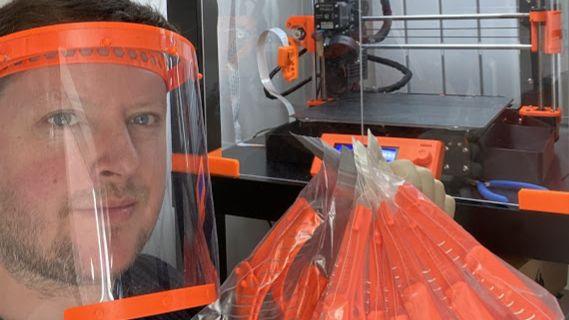
- Published16 March 2020
